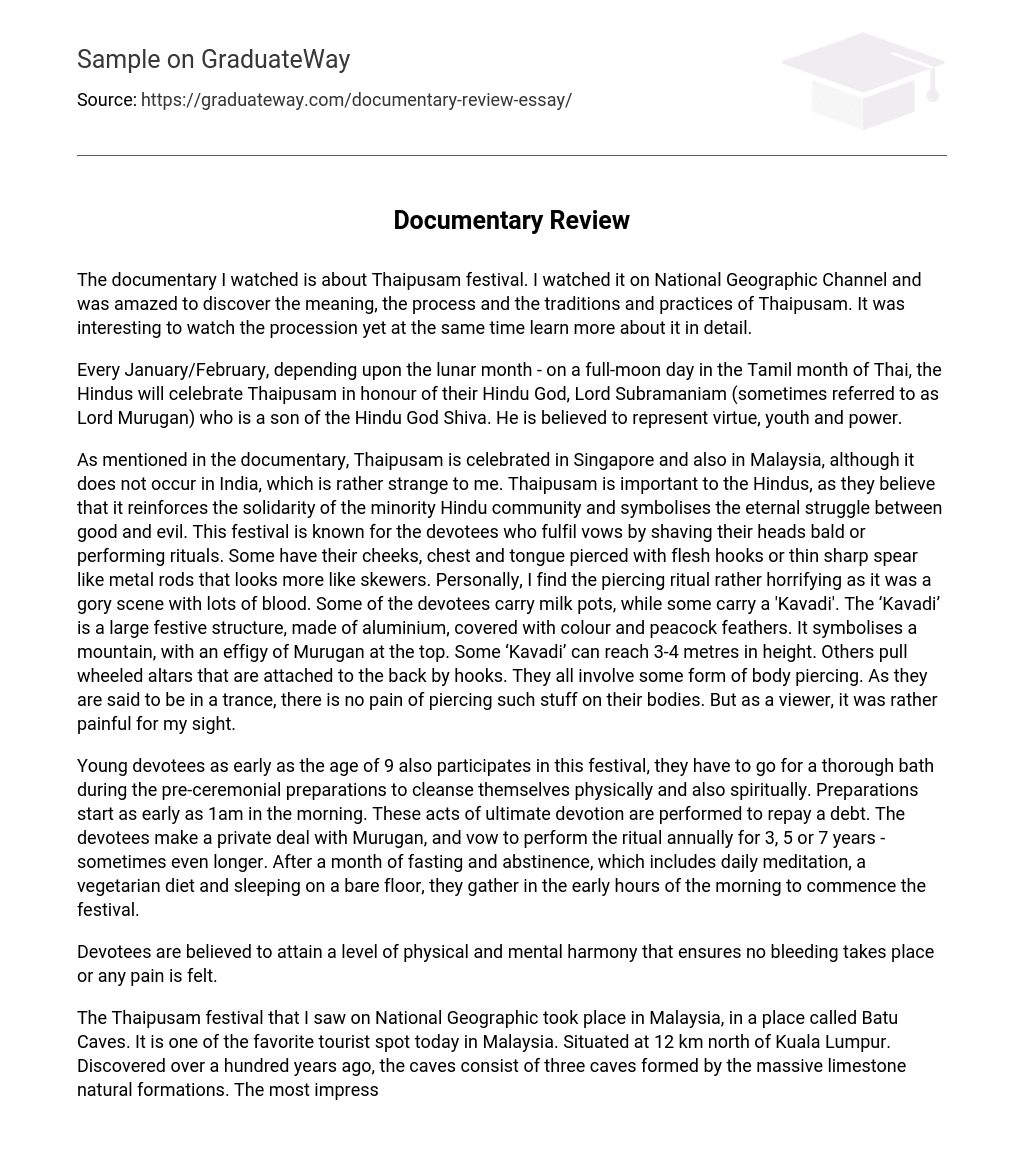The National Geographic Channel aired a captivating documentary on the Thaipusam festival, which provided an in-depth look into its significance, customs, and traditions. As I watched the grand procession and delved into its intricate details, I found myself fascinated by this mesmerizing documentary.
Thaipusam is a yearly Hindu festival that occurs in January/February, specifically on a full-moon day in the Tamil month of Thai. This festival pays homage to Lord Subramaniam, also referred to as Lord Murugan, who is recognized as the offspring of Shiva, a Hindu god. Lord Subramaniam represents qualities such as virtue, youthfulness, and strength.
The documentary discusses the celebration of Thaipusam in Singapore and Malaysia, but not in India, which I find peculiar. This festival holds great significance for Hindus, who view it as a means of strengthening their unity and representing the ongoing battle between good and evil. Devotees fulfill vows by either shaving their heads or performing various rituals. Some even engage in an unsettling piercing ritual where hooks or metal rods resembling skewers are inserted into their cheeks, chest, and tongue, resulting in a graphic scene with bloodshed. Others carry milk pots or a festive structure called ‘Kavadi,’ made of aluminum and adorned with colorful peacock feathers. The ‘Kavadi’ symbolizes a mountain and has an effigy of Murugan at its pinnacle, towering 3-4 meters high. Devotees also pull wheeled altars using hooks attached to their backs; all these exhibitions involve some form of body piercing. It is believed that those entranced during the festival do not feel any pain from these piercings; however, as an observer, it was distressing for me to witness.
The festival entails young devotees, some as young as 9 years old, who must go through a thorough bath for both physical and spiritual purification prior to the ceremony. The preparations begin at 1am to show dedication and fulfill a personal agreement with Murugan. This commitment necessitates them to perform the ritual yearly for either 3, 5, or even 7 years, potentially lasting longer. After fasting and refraining from certain activities for a month, including daily meditation and following a vegetarian diet while sleeping on an unfurnished floor, they gather in the early morning hours to commence the festival.
Devotees are believed to reach a state of physical and mental equilibrium in which they do not suffer from bleeding or pain.
The Thaipusam festival took place in Malaysia, specifically in Batu Caves, as shown on National Geographic. Batu Caves is a popular tourist destination located 12 km north of Kuala Lumpur. These caves were discovered over a hundred years ago and are natural limestone formations. Among the three caves, the largest and most remarkable one is the Temple Cave, which requires climbing 272 steps to reach its top. It was at this location that the Thaipusam procession occurred, attracting Hindus and tourists alike. As a result, there was overcrowding and a smoky atmosphere from incense. Fortunately, I watched this on television and did not experience firsthand the crowded conditions portrayed.
After watching the documentary, I gained a better understanding of Thaipusam. As a boy living in Singapore, I always found the Thaipusam procession puzzling. I would watch it pass by year after year without fully grasping its significance to the Hindu community.





